Red Planet Express: 10 Ways Robots Move on Mars
How to Move on Mars
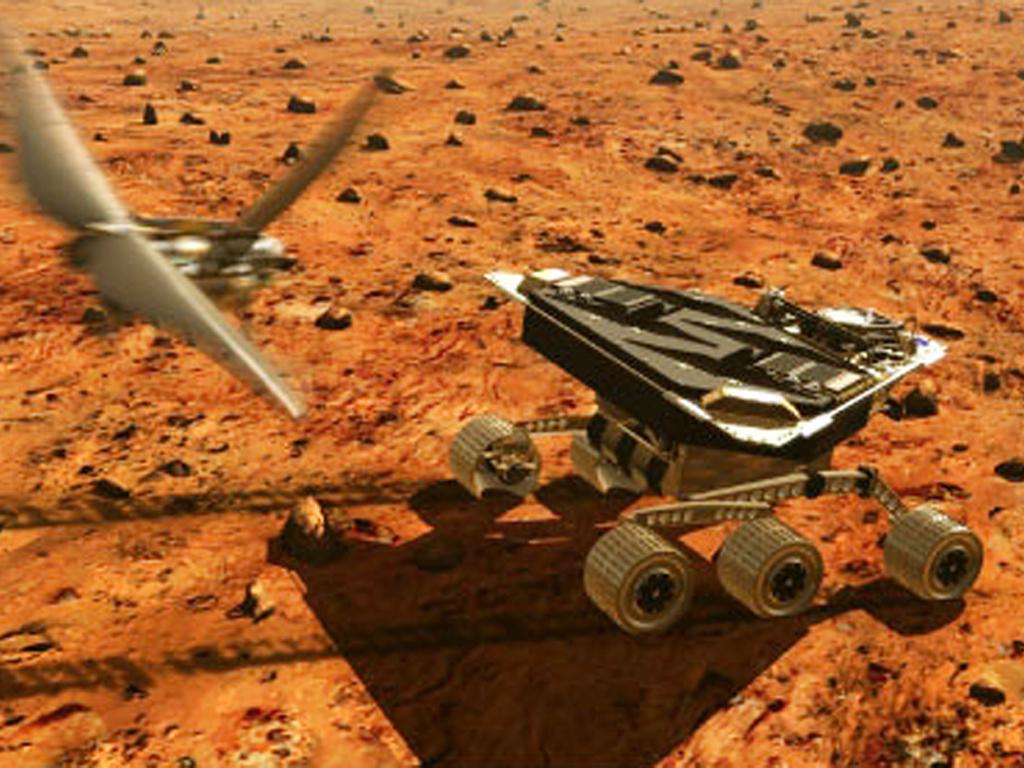
Roving is currently the most common way that robots on Mars get from A to B, but it isn't necessarily the most practical. Here are 10 ways that robots can move around on Mars.
First Stop: A Mars Helicopter?
Mars Helicopter
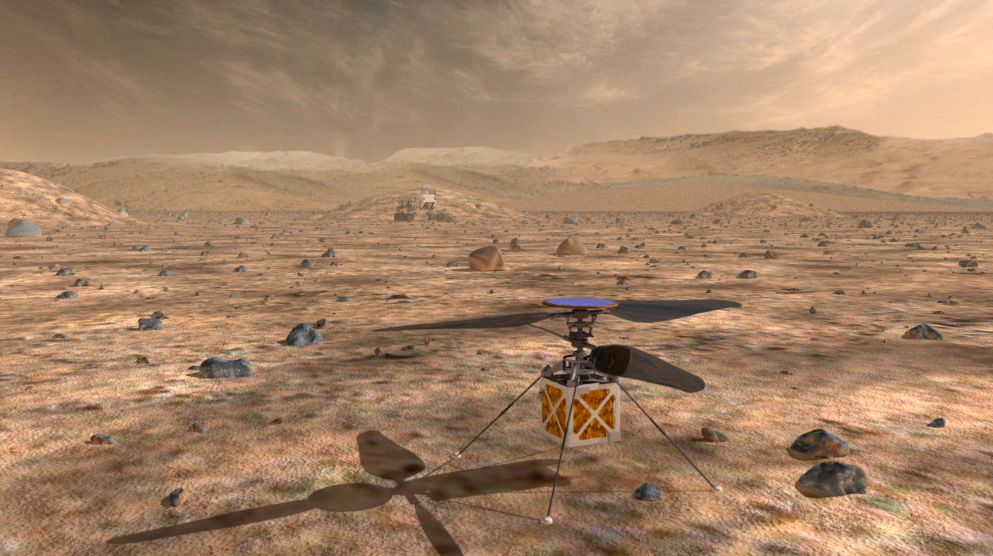
This proposed robotic helicopter could triple the distances that Mars rovers could drive in a day and help pinpoint interesting targets for study, NASA researchers said. The low-flying scout helicopter would travel ahead of a rover to scope out the best driving routes. Engineers at NASA's Jet Propulsion Laboratory in Pasadena, California, have been testing the design, but the agency has no concrete plans to take the helicopter to Mars — yet. Read more about the Mars Helicopter here.
Up Next: Extreme Access Flyers
Extreme Access
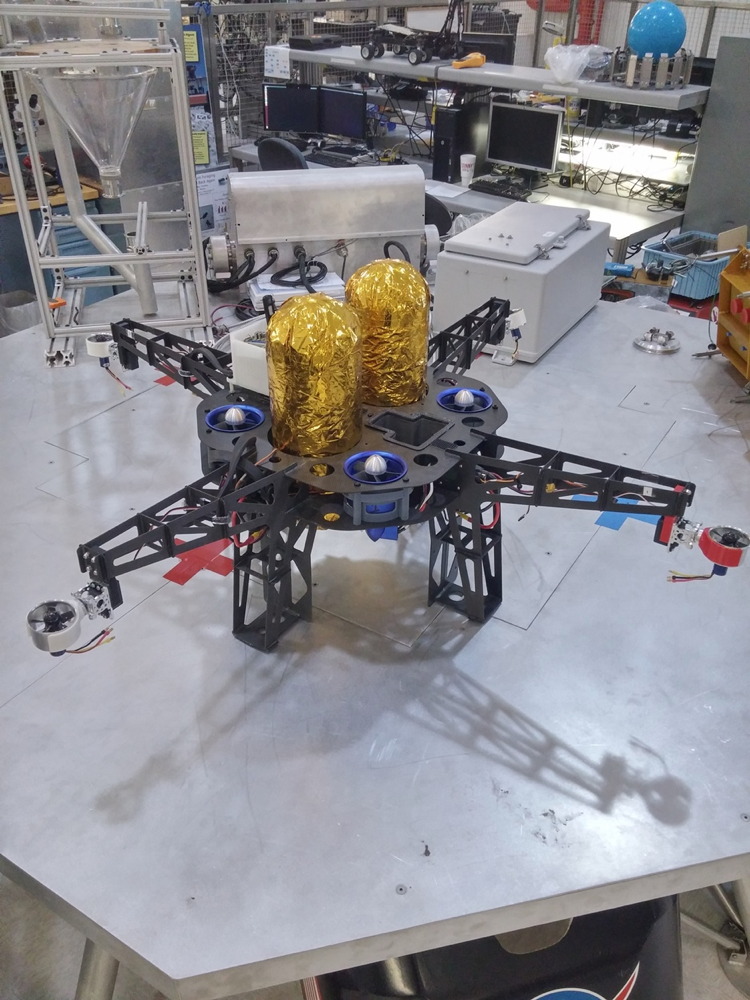
Engineers at NASA's Kennedy Space Center have invented an autonomous quadcopter, or drone, to fly on Mars. The machines are fast and flexible and can squeeze into places that other Mars robots cannot. They will be able to collect soil samples and return them to a mothership, which doubles as a charging station. Read more about the Mars drones here.
Up Next: 'Entomopter'
Entomopter
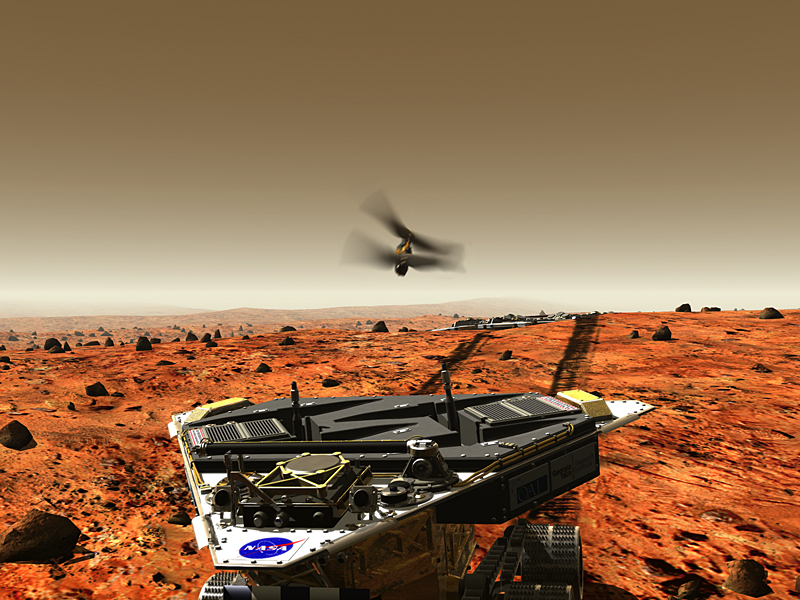
Insects inspired the design for this aircraft, called an Entomopter. Conventional types of helicopters and airplanes would have a hard time maneuvering through Mars' thin atmosphere, but the rapidly flapping wings on this aircraft design make flying on the Red Planet more practical. Other aircraft have to fly at over 250 mph (or 400 km/h) to remain airborne, which means that landing or taking off from the Martian surface are out of the question. But the Entomopter can fly slowly, land, take off and even crawl! It would be able to collect samples and return to a home base (like the rover pictured in the foreground) to recharge. A team led by Anthony Colozza at the Ohio Aerospace Institute in Cleveland received funding from NASA's Institute for Advanced Concepts in 2002 to develop this design for a Mars aircraft. Watch the Entomopter in action in this video.
Up Next: Flying Saucers
LDSD, the 'Flying Saucer'
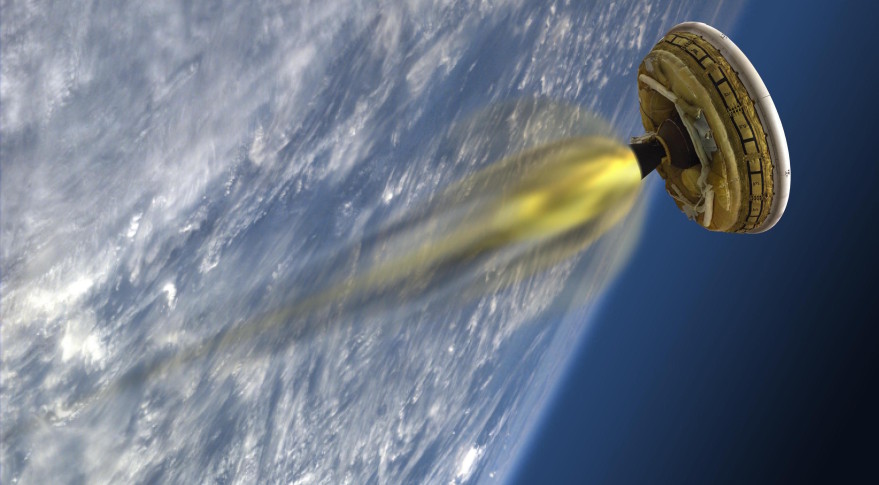
NASA's Low-Density Supersonic Decelerator project combines a balloon with a rocket to deliver huge payloads to the Martian surface — up to 15 tons. Mars Science Lab, the Curiosity rover, weighs only 1 ton and is currently the biggest spacecraft to land on Mars. LDSD could one day even deliver something as heavy as 100 tons or more, NASA officials said. The flying-saucer-shaped balloon will help slow down the landing in Mars' thin atmosphere. Read more about LDSD here.
Up Next: Gliders
Prandtl Glider
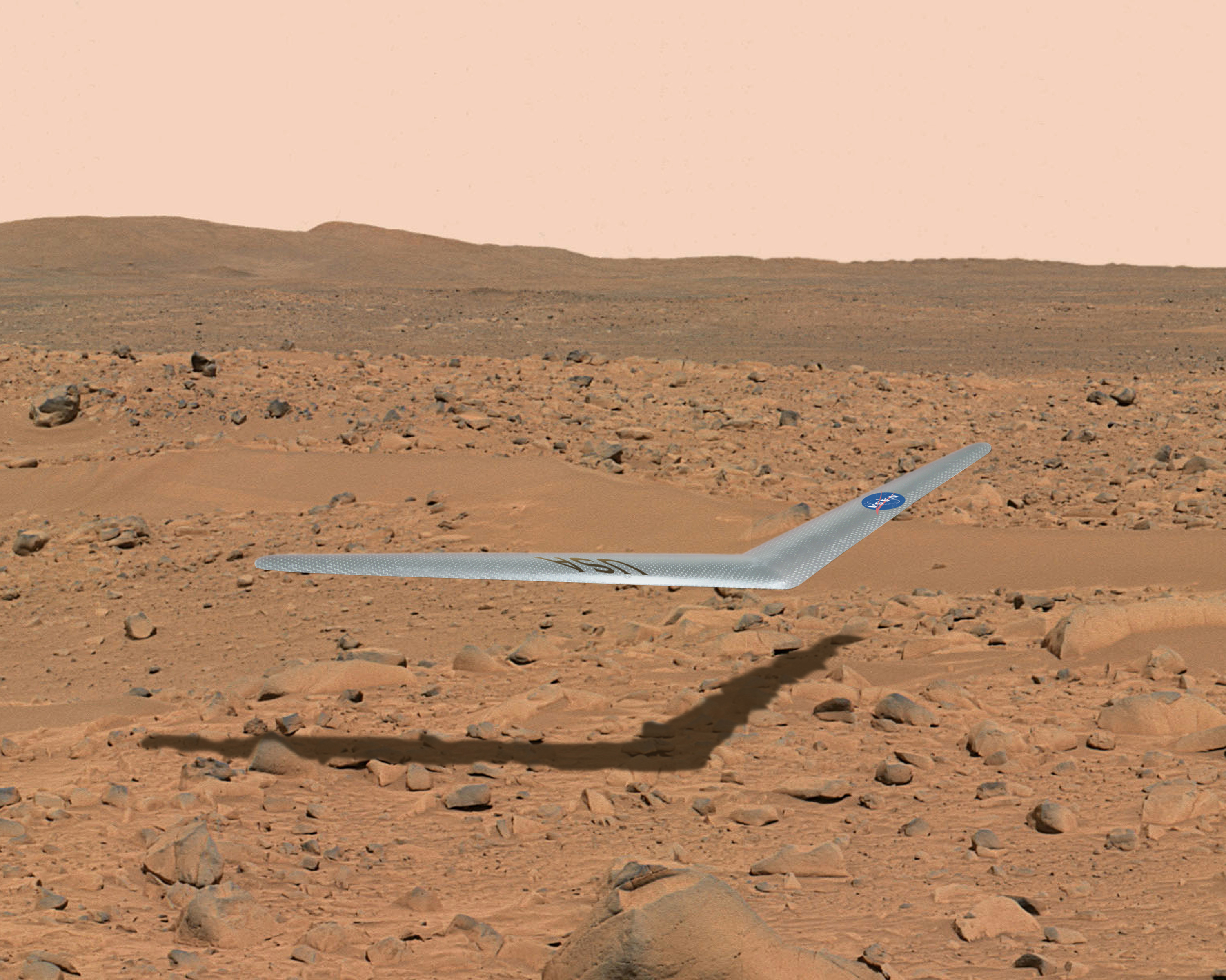
Student interns at NASA's Armstrong Flight Research Center in Edwards, California, helped to design this prototype of an engineless Mars glider called Prandtl-m. The design for this glider was inspired by boomerangs and birds and is based on a concept developed by German engineer Ludwig Prandtl around a century ago. This glider has no rudder and a slight twist in its wings, which helps to minimize air resistance and maximize efficiency. At Mars, it would be deployed high up in the atmosphere and collect data while floating down to the surface. NASA said it hopes to see one of its Prandtl gliders hitch a ride to Mars with the upcoming Mars 2020 rover mission. Read more about the Prandtl project here.
Up Next: Mini-Sniffer
Mini-Sniffer
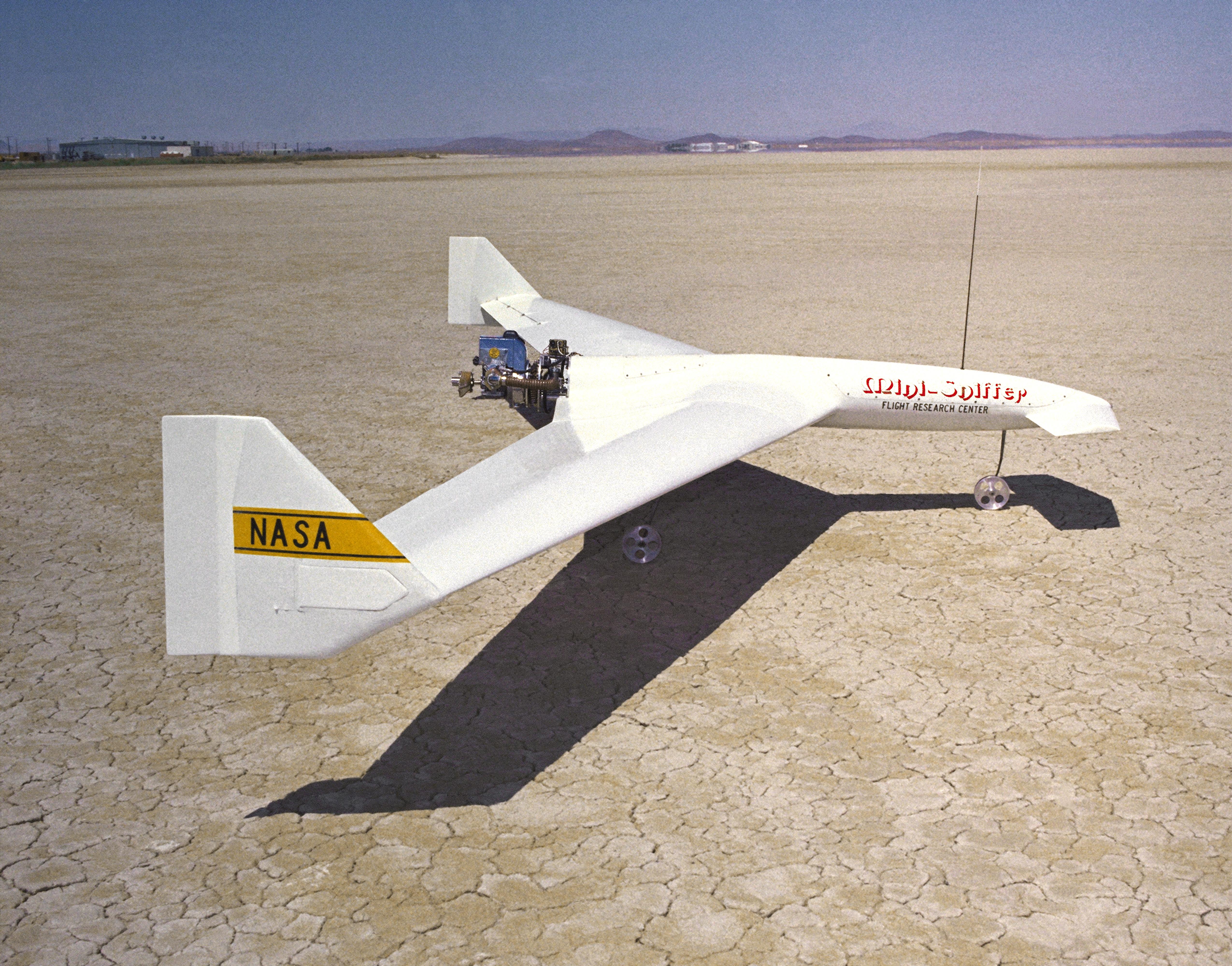
This proposed foldable Mars airplane concept is based on the design of a craft that flew on Earth in the 1970s. Three different versions of the Mini-Sniffer were developed by NASA to fly over Earth and test the upper atmosphere for pollution. Dale Reed, a researcher at NASA's Dryden Flight Research Center in Edwards, California, earned a patent in 1977 for the proposed Mars airplane. But NASA's plans for the Mars Mini-Sniffer never got off the ground.
Up Next: ARES Mars Airplane
ARES Mars Airplane
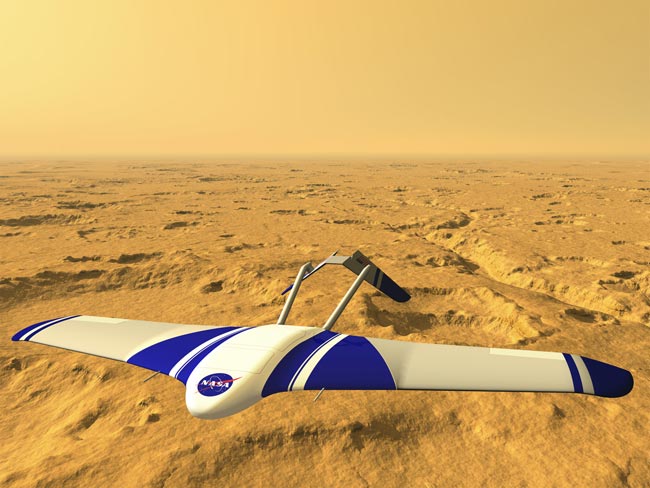
Rocket-powered airplanes could be the solution to the flying problems posed by Mars' thin atmosphere. This aircraft, called the Aerial Regional-scale Environmental Surveyor (ARES), could fly over mountains, craters and volcanoes on Mars — places that terrestrial robots often cannot reach. It was developed at NASA's Langley Research Center in Virginia. A prototype has already been built and tested, and now the ARES team said it hopes to send its aircraft to Mars via NASA's Mars Scout Program. Read more about ARES here.
Up Next: Tumbleweed Rovers
Tumbleweed Rovers
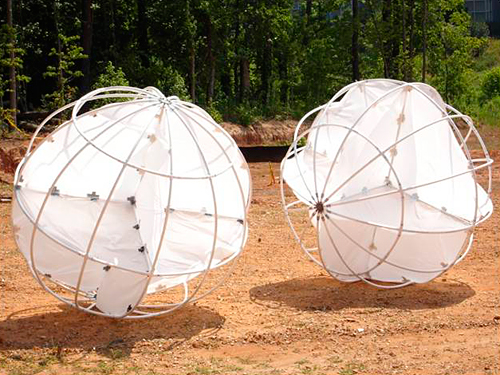
One proposed way to travel on Mars is essentially a giant beach ball that rolls around in the wind. It wouldn't need any engines — just the wind. Engineers at NASA's Jet Propulsion Laboratory said that a payload of scientific instuments would be suspended inside the ball with tension cords. If scientists decide that one of these rovers needs to stop to take a measurement, the ball can be partially deflated to keep it from blowing away. NASA has already performed field tests with tumbleweed rover prototypes on Earth, but they have yet to be tested on Mars.
Up Next: Conventional Rovers
Roving with Wheels
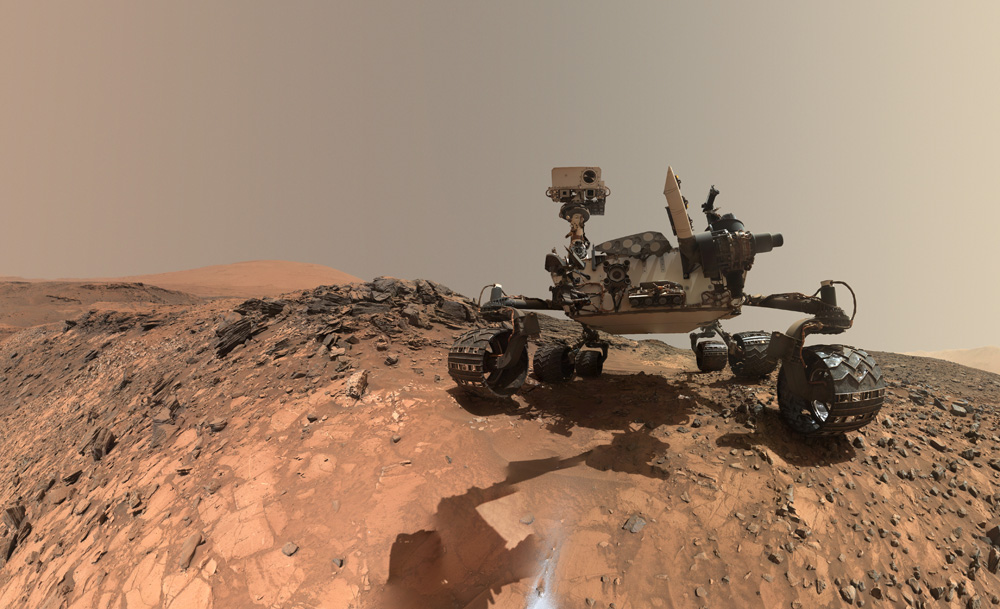
So far the most popular type of robotic Mars explorer has been the rover. These types of Mars robots are somewhat comparable to vehicles that rove around on Earth, at roughly the size of a compact sedan. Several rovers have been sent to Mars, but only two are still functioning today: NASA's Curiosity (Mars Science Laboratory) and Opportunity. Another NASA rover, named Spirit — Opportunity's twin — went silent in 2010 after one of its wheels became trapped in the Martian sand.
Though the remote-controlled rovers may be the most intuitive form of robot for humans to build and operate, they do have some drawbacks. Aside from the risk of getting stuck like Spirit did, rovers can't drive very fast on Mars. Curiosity creeps along at about 2 inches (5 centimeters) per second, or 0.11 mph (0.18 km/h). Some areas of Mars are inaccessible to rovers, like steep mountains ridges or craters. [Infographic: Mars Explored: Landers and Rovers Since 1971]
Hopping Bots
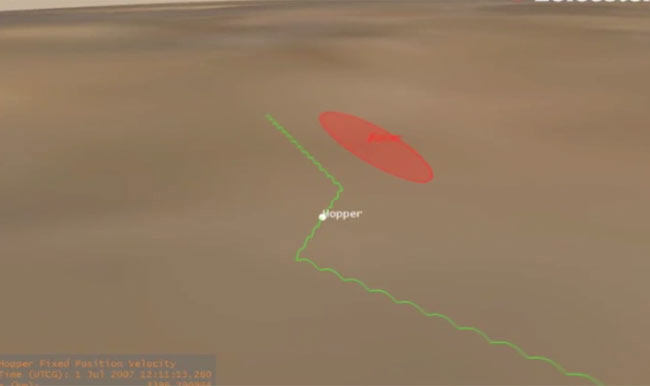
Someday, Mars robots could get around on the Red Planet by hopping from place to place. These vehicles would use gas from the Martian atmosphere to propel their rockets and leap around. Researchers in England have proposed a hopping robot that uses radioactive isotopes as an initial power supply to squeeze gas into thrusters and heat it up before the propulsion system can begin powering the hopping. A hopper like this could fly in 0.6-mile (1 kilometer) hops at least, the researchers said. Read more about the hopping robots here.
Join our Space Forums to keep talking space on the latest missions, night sky and more! And if you have a news tip, correction or comment, let us know at: community@space.com.
Get the Space.com Newsletter
Breaking space news, the latest updates on rocket launches, skywatching events and more!

Hanneke Weitering is a multimedia journalist in the Pacific Northwest reporting on the future of aviation at FutureFlight.aero and Aviation International News and was previously the Editor for Spaceflight and Astronomy news here at Space.com. As an editor with over 10 years of experience in science journalism she has previously written for Scholastic Classroom Magazines, MedPage Today and The Joint Institute for Computational Sciences at Oak Ridge National Laboratory. After studying physics at the University of Tennessee in her hometown of Knoxville, she earned her graduate degree in Science, Health and Environmental Reporting (SHERP) from New York University. Hanneke joined the Space.com team in 2016 as a staff writer and producer, covering topics including spaceflight and astronomy. She currently lives in Seattle, home of the Space Needle, with her cat and two snakes. In her spare time, Hanneke enjoys exploring the Rocky Mountains, basking in nature and looking for dark skies to gaze at the cosmos.
